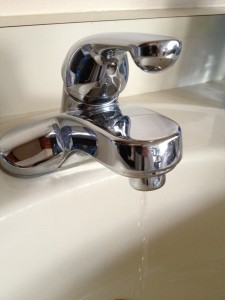How do you know if your saline implant is leaking?
1. When a saline implant ruptures it is not a spectacular event. There are no fireworks, big noises, or explosions. You will likely notice a slow change over time, that tickling feeling of “does this breast seem different to you?” If you are in a room with a bunch of people, no one is going to see and hear it.
2. The size will get smaller. I know this seems obvious, but sometimes people notice a change in the position – my cleavage area is not as full- but the volume of the implant is the same when they put on their bra. This likely represents a change in position, not a change in volume. If your implant is leaking it will gradually get smaller over time. I have seen patients with an intermittent leak or very slow leak where it takes weeks to show up.
It is just like if you get a flat tire. There are some flats which happen quickly. Other flat tires are slow leaks over days, and you can keep the tire going by just inflating it a bit every couple days.

3. Increased wrinkling does not mean it is leaking. Again, as in point two above, if the volume looks the same in a bra, then it is not leaking. Wrinkling can increase as you age due to less coverage over the implant. This happens with time, as the overlying tissue thins.
Imagine the tissue covering your implant is like the comforter on your bed. Over time, your comforter settles and thins. When what used to be a thick down comforter of padding over your implant thins, it acts like a thin sheet. Less padding = more implant visibility.
4. Mammograms (or skiing, bungy jumping, or other activities) do not cause implants to rupture by themselves. If your implant ruptures after an event, it already had a weakness somewhere in the shell. Something would have tipped it over. Remember these are man-made fallible objects. They will fail at some point.
5. The implant does not always leak at the port. It always seemed the port would be the likely place for an implant to leak, right? Where the tubing meets the implant to fill it? I have found for most of my patients the issue is at the periphery of the shell.
